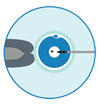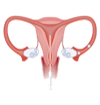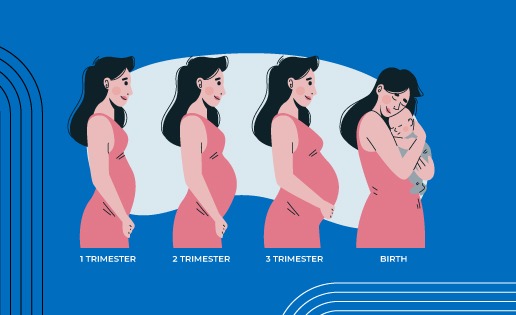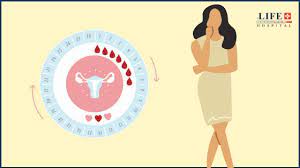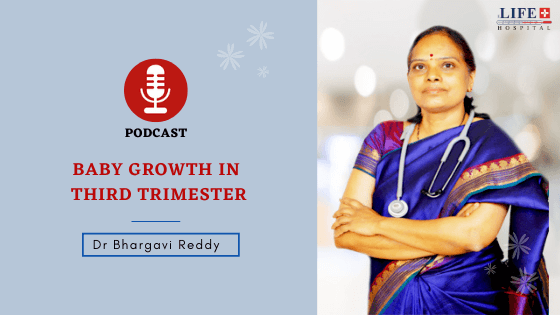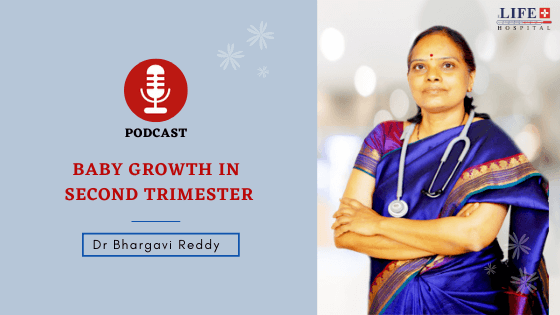Best treatment for male infertility
Now get the best in-class treatment for male infertility at the specialised center of The Life Plus Hospital and treat problems like Premature Ejaculation, Low Sperm Count, and other sexual problems.
THE LIFE PLUS HOSPITAL is COVID 19 Safe
1. Our Hospital premises are COVID safe
2. Regular sanitization of clinic & hospital premises
3. Immediate medical assistance through Online Consultation
Best treatment for male infertility
Now get the best in-class treatment for male infertility at the specialised center of The Life Plus Hospital and treat problems like Premature Ejaculation, Low Sperm Count, and other sexual problems.
THE LIFE PLUS HOSPITAL is COVID 19 Safe
- Our Hospital premises are COVID safe
- Regular sanitization of clinic & hospital premises
- Immediate medical assistance through Online Consultation

What is Male Infertility?
Male infertility is any health issue in a man that lowers the chances of his female partner getting pregnant.
About 13 out of 100 couples can’t get pregnant with unprotected sex. There are many causes for infertility in men and women. In over a third of infertility cases, the problem is with the man. This is most often due to problems with his sperm production or with sperm delivery.
The incapacity of the male partner to impregnate his fertile female partner is defined as male infertility. It is quite a common and stressful condition for males that requires proper medical attention. Infertility affects nearly 7% of all men. There can be numerous causes to it such as poor quality of semen, low sperm production, erectile dysfunction, etc.
Let's Schedule Your Appointment
Treatment

Diagnosis
The diagnosis of male infertility is based on symptoms. It can be analyzed with the help of a physical examination and medical history of the patient by the doctors and by a discussion of the symptoms occurring thereof. Furthermore, there are quite a number of tests available that may indicate the accurate diagnosis: Physical examination and medical history of the patient
- Analysis of Semen
- Ultrasound of scrotum
- Post-ejaculation urinalysis
- Evaluation of Hormones
- Testicular biopsy


Our Doctors
Why The Life Plus Hospital?
 The Life Plus Hospital is COVID-19 safe
The Life Plus Hospital is COVID-19 safe
Your safety is taken care of by thermal screening, social distancing, sanitized clinics, and hospital rooms, sterilized surgical equipment, and mandatory PPE kits during surgery.
 Medical Expertise With Technology
Medical Expertise With Technology
Our Doctors spend a lot of time with you to diagnose your condition. You are assisted in all pre-assisted Hospitalisation process. We offer advanced laser and laparoscopic surgical treatment. Our procedures are USFDA approved.
 Assisted Surgery Experience
Assisted Surgery Experience
A dedicated Medical Coordinator assists you throughout the surgery journey from insurance paperwork, to free commute from home to hospital & back and admission-discharge process at the hospital.
 Post Natal Care
Post Natal Care
We offer free follow-up consultations and instructions including dietary tips as well as exercises to every patient to ensure they have a smooth recovery to their daily routines.
The Life Plus Hospital in Numbers
IVF / ICSI
Surrogacy
IUI
Healthy IVF Babies
What Happens Under Normal Conditions?
The man’s body makes tiny cells called sperm. During sex, ejaculation normally delivers the sperm into the woman’s body.
The male reproductive system makes, stores, and transports sperm. Chemicals in your body called hormones control this. Sperm and male sex hormone (testosterone) are made in the 2 testicles. The testicles are in the scrotum, a sac of skin below the penis. When the sperm leave the testicles, they go into a tube behind each testicle. This tube is called the epididymis.
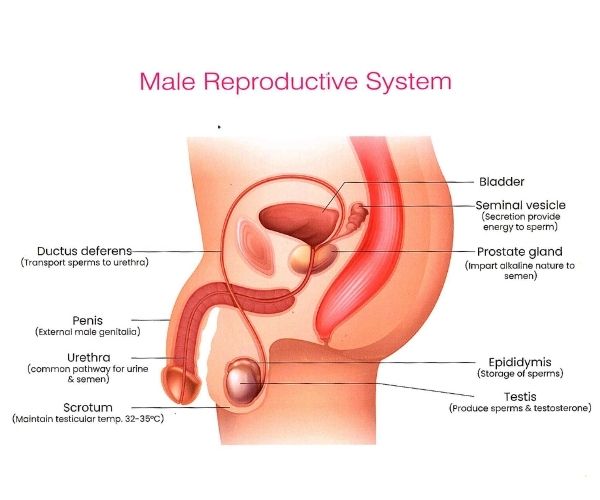 Just before ejaculation, the sperm go from the epididymis into another set of tubes. These tubes are called the vas deferens. Each vas deferens leads from the epididymis to behind your bladder in the pelvis. There each vas deferens joins the ejaculatory duct from the seminal vesicle. When you ejaculate, the sperm mix with fluid from the prostate and seminal vesicles. This forms semen. Semen then travels through the urethra and out of the penis.
Just before ejaculation, the sperm go from the epididymis into another set of tubes. These tubes are called the vas deferens. Each vas deferens leads from the epididymis to behind your bladder in the pelvis. There each vas deferens joins the ejaculatory duct from the seminal vesicle. When you ejaculate, the sperm mix with fluid from the prostate and seminal vesicles. This forms semen. Semen then travels through the urethra and out of the penis.
Male fertility depends on your body making normal sperm and delivering them. The sperm go into the female partner’s vagina. The sperm travel through her cervix into her uterus to her fallopian tubes. There, if a sperm and egg meet, fertilization happens.
The system only works when genes, hormone levels and environmental conditions are right.
Causes
Making mature, healthy sperm that can travel depends on many things. Problems can stop cells from growing into sperm. Problems can keep the sperm from reaching the egg. Even the temperature of the scrotum may affect fertility. These are the main causes of male infertility:
- Sperm Disorders
- Varicoceles
- Retrograde Ejaculation
- Immunonologic Infertility
- Obstruction
- Hormones
- Medication
Sperm Disorders
The most common problems are with making and growing sperm. Sperm may:
- not grow fully
- be oddly shaped
- not move the right way
- be made in very low numbers (oligospermia)
- not be made at all (azoospermia)
Sperm problems can be from traits you’re born with. Lifestyle choices can lower sperm numbers. Smoking, drinking alcohol, and taking certain medications can lower sperm numbers. Other causes of low sperm numbers include long-term sickness (such as kidney failure), childhood infections (such as mumps), and chromosome or hormone problems (such as low testosterone).
Damage to the reproductive system can cause low or no sperm. About 4 out of every 10 men with total lack of sperm (azoospermia) have an obstruction (blockage) within the tubes the sperm travel through. A birth defect or a problem such as an infection can cause a blockage.
Varicoceles
Varicoceles are swollen veins in the scrotum. They’re found in 16 out of 100 of all men. They are more common in infertile men (40 out of 100). They harm sperm growth by blocking proper blood drainage. It may be that varicoceles cause blood to flow back into your scrotum from your belly. The testicles are then too warm for making sperm. This can cause low sperm numbers.
For more information please refer to the Varicoceles information page.
Retrograde Ejaculation
Retrograde ejaculation is when semen goes backwards in the body. They go into your bladder instead of out the penis. This happens when nerves and muscles in your bladder don’t close during orgasm (climax). Semen may have normal sperm, but the semen is not released from the penis, so it cannot reach the vagina.
Retrograde ejaculation can be caused by surgery, medications or health problems of the nervous system. Signs are cloudy urine after ejaculation and less fluid or “dry” ejaculation.
Immunologic Infertility
Sometimes a man’s body makes antibodies that attack his own sperm. Antibodies are most often made because of injury, surgery or infection. They keep sperm from moving and working normally. We don’t know yet exactly how antibodies lower fertility. We do know they can make it hard for sperm to swim to the fallopian tube and enter an egg. This is not a common cause of male infertility.
Obstruction
Sometimes the tubes through which sperm travel can be blocked. Repeated infections, surgery (such as vasectomy), swelling or developmental defects can cause blockage. Any part of the male reproductive tract can be blocked. With a blockage, sperm from the testicles can’t leave the body during ejaculation.
Hormones
Hormones made by the pituitary gland tell the testicles to make sperm. Very low hormone levels cause poor sperm growth.
Chromosomes
Sperm carry half of the DNA to the egg. Changes in the number and structure of chromosomes can affect fertility. For example, the male Y chromosome may be missing parts.
Medication
Certain medications can change sperm production, function and delivery. These medications are most often given to treat health problems like:
- arthritis
- depression
- digestive problems
- anxiety or depression
- infections
- high blood pressure
- cancer
Diagnosis
Causes of male fertility can be hard to diagnose. The problems are most often with sperm production or delivery. Diagnosis starts with a full history and physical exam. Your health care provider may also want to do blood work and semen tests.
Men should plan to see a doctor after one year of trying to conceive or if any of the following apply:
- erectile dysfunction (ED)
- problems with ejaculation, such as delayed ejaculation or retrograde ejaculation
- low sex drive
- pain or swelling in the genital area
- having undergone a previous surgery in the genital area
Your doctor will first take your medical history. During this time, they’ll ask about your overall health, your sexual history, and factors that could affect your fertility. They’ll also perform a physical examination where they check your genitals for any structural abnormalities or lumps.
A semen analysis will likely then be performed. Your doctor will ask you to provide a sample of semen. This sample will then be checked in a laboratory to see how many sperm are present and whether the sperm are shaped normally and moving properly.
Depending on the results of your initial exam and semen analysis, your doctor may want to perform additional tests.
These tests may include:
- hormone testing
- genital ultrasound
- genetic testing
History and Physical Exam
Your health care provider will take your health and surgical histories. Your provider will want to know about anything that might lower your fertility. These might include defects in your reproductive system, low hormone levels, sickness or accidents.
Your provider will ask about childhood illnesses, current health problems, or medications that might harm sperm production. Such things as mumps, diabetes and steroids may affect fertility. Your provider will also ask about your use of alcohol, tobacco, marijuana and other recreational drugs. He or she will ask if you’ve been exposed to radiation, heavy metals or pesticides. Heavy metals are an exposure issue (e.g. mercury, lead arsenic). All of these can affect fertility.
Your health care provider will learn how your body works during sex. He or she will want to know about you and your partner’s efforts to get pregnant. For example, your healthcare provider may ask if you’ve had trouble with erections.
The physical exam will look for problems in your penis, epididymis, vas deferens, and testicles. Your doctor will look for varicoceles. They can be found easily with a physical exam.
Semen Analysis
Semen analysis is a routine lab test. It helps show the level of sperm production and whether sperm are functioning well (e.g., are moving, measured as sperm motility). The test is most often done at least twice, if sperm numbers are abnormal. Semen is collected by having you masturbate into a sterile cup. The semen sample is studied. It can be checked for things that help or hurt conception (fertilization).
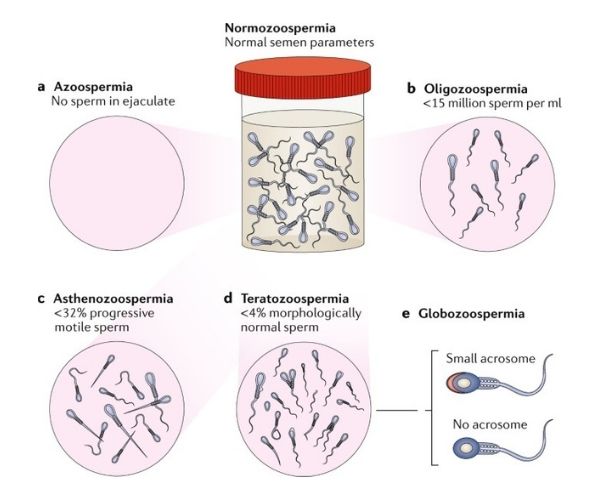 Your health care provider will study your sperm volume, count, concentration, movement (“motility”), and structure. The results of the semen analysis tests tells about your ability to conceive (start a pregnancy).
Your health care provider will study your sperm volume, count, concentration, movement (“motility”), and structure. The results of the semen analysis tests tells about your ability to conceive (start a pregnancy).
Even if the semen test shows low sperm numbers or no sperm, it may not mean you are permanently infertile. It may just show there’s a problem with the growth or delivery of sperm. More testing may be needed. Even if no sperm are seen on a semen analysis, then treatment may be possible.
Transrectal Ultrasound
Your health care provider may order a transrectal ultrasound. Ultrasound uses sound waves bouncing off an organ to get a picture of the organ. A probe is placed in the rectum. It beams sound waves to the nearby ejaculatory ducts. The health care provider can see if structures such as the ejaculatory duct or seminal vesicles are poorly formed or blocked.
Testicular Biopsy
If a semen test shows a very low number of sperm or no sperm you may need a testicular biopsy. This test can be done with general or local anesthesia. A small cut is made in the scrotum. It can also be done in a clinic using, a needle through the numbed scrotal skin. In either case, a small piece of tissue from each testicle is removed and studied under a microscope. The biopsy serves 2 purposes. It helps find the cause of infertility and it can collect sperm for use in assisted reproduction (such as in vitro fertilization; IVF).
Hormonal Profile
The health care provider may check your hormones. This is to learn how well your testicles make sperm. It can also rule out major health problems. For example, follicle-stimulating hormone (FSH) is the pituitary hormone that tells the testicles to make sperm. High levels may mean your pituitary gland is trying to get the testicles to make sperm, but they won’t.
Treatment
Treatment depends on what’s causing infertility. Many problems can be fixed with drugs or surgery. This would allow conception through normal sex. The treatments below are broken into 3 categories:
- Non-surgical therapy for Male Infertility
- Surgical Therapy for Male Infertility
- Treatment for Unknown Causes of Male Infertility
Many male fertility problems can be treated without surgery.
Anejaculation (dry ejaculate)
Anejaculation is when there’s no semen fluid released with a man’s sexual climax. It’s not common, but can be caused by:
- spinal cord injury
- prior surgery
- diabetes
- multiple sclerosis
- abnormalities present at birth
- other mental, emotional or unknown problems
Drugs are often tried first to treat this condition. If they fail, there are several option. Penile vibratory stimulation (PVS)
or Rectal probe electroejaculation (RPE, better known as electroejaculation or EEJ) may induce ejaculation.
Rectal probe electroejaculation is most often done under anesthesia. This is true except in men with a damaged spinal cord. RPE retrieves sperm in 90 out of 100 men who have it done. Many sperm are collected with this method. But sperm movement and shape may still lower fertility.
Penile vibratory stimulation vibrates the tip and shaft of the penis to help get a natural climax. While non-invasive, it doesn’t work as well as RPE. This is especially true in severe cases.
Assisted reproductive techniques like in vitro fertilization (IVF) and intracytoplasmic sperm injection (ICSI) are of great value to men with anejaculation because sperm may be weak in men with impaired sperm (cells) and semen (fluid) transport out of the body, the underlying problem with anejaculation.
Genital Tract Infection
Genital tract infection is rarely linked to infertility. It’s only found in about 2 out of 100 men with fertility problems. In those cases, the problem is often diagnosed from a semen test. In the test, white blood cells are found. White blood cells make too much “reactive oxygen species” (ROS). This can damage sperm, lowering the chances of sperm being able to fertilize an egg. For example, a severe infection of the epididymis and testes may cause testicular shrinking and epididymal duct blockage. The infection doesn’t have to be sudden to cause problems.
Antibiotics are often given for full-blown infections. But they’re not used for lesser inflammations. Some antibiotics can occasionally harm sperm production or function. Non-steroidal anti-inflammatories (such as ibuprofen) are often used instead.
Inflammation from causes other than infection can also affect fertility. For example, chronic prostatitis, in rare cases, can also block the ejaculatory ducts.
Hyperprolactinemia
Hyperprolactinemia is when the pituitary gland makes too much of the hormone prolactin. It’s a factor in infertility and erectile dysfunction. Treatment depends on what’s causing the increase. Drugs or less commonly surgery may be used to treat tumors in the pituitary if present.
Hypogonadotropic Hypogonadism
Hypogonadotropic hypogonadism is when the testicles don’t make sperm due to poor stimulation by the pituitary hormones. This is due to a problem in the pituitary or hypothalamus. It’s the cause of a small percentage of infertility in men. It can exist from birth,typically being apparent when the young man is supposed to go through puberty (“congenital”). Or it can show up later (“acquired”).
The congenital form, known also as Kallmann’s syndrome, is caused by lower amounts of gonadotropin-releasing hormone (GnRH). GnRH is a hormone made by the hypothalamus. The acquired form can be triggered by other health issues such as:
- pituitary tumors
- head trauma
- anabolic steroid use.
If hypogonadotropic hypogonadism is suspected, your health care provider may want you to have an MRI. This will show a picture of your pituitary gland. You will also have a blood test to check prolactin levels. Together, an MRI and blood test can evaluate for pituitary tumors. If there are high levels of prolactin but no tumor on the pituitary gland, your provider may try to lower your prolactin first. Gonadotropin replacement therapy would be the next step. During treatment, blood testosterone levels and semen will be checked. Chances for pregnancy are very good. The sperm resulting from this treatment are normal.
Genetic Conditions
Some men are born with a genetic condition that may be new (not present in other family members) or hereditary (passed from mother and/or father), showing up first in the affected patient. The known causes of genetic abnormalities are most commonly detected in men with no sperm in the ejaculate (azoospermia), where the condition affects sperm production (e.g., Klinefelter syndrome – where an extra chromosome is present in the man, or Y chromosome microdeletions – where a small segment of genetic tissue is missing.). Genetic conditions can also affect the development of the male tract that carries sperm, resulting in failure of formation of the tubes that are supposed to carry sperm.
Retrograde Ejaculation
Retrograde ejaculation, semen flowing back instead of going out the penis, has many causes. It can be caused by:
- prostate or bladder surgeries
- diabetes
- spinal cord injury
- anti-depressants
- certain anti-hypertensives
- medications used to treat prostate enlargement (BPH)
Retrograde ejaculation is found by checking your urine for sperm. This is done under a microscope right after ejaculation. Drugs can be used to correct retrograde ejaculation.
It is often treated first with over-the-counter medications like Sudafed®. If medications don’t work and you need assisted reproductive techniques (ARTs), your health care provider may try to collect sperm from your bladder after ejaculation.
Surgical Therapy for Male Infertility
Varicocele Treatments
Varicoceles can be fixed with minor outpatient surgery called varicocelectomy. Fixing these swollen veins helps sperm movement, numbers, and structure. For more information on varicocele treatments please refer to our Varicoceles page.
Azoospermia Treatments
If your semen lacks sperm (azoospermia) because of a blockage, there are many surgical choices.
Even men who have low sperm production as a cause of no sperm in the ejaculate can be treated with surgery to find sperm, together with assisted reproduction, since several million sperm have to be made in the testicles before sperm survive to make it into the semen.
Microsurgical Vasovasostomy
Vasovasostomy is used to undo a vasectomy. It uses microsurgery to join the 2 cut parts of the vas deferens in each testicle. For more information on this treatment please refer to our Vasectomy Reversal page.
Vasoepididymostomy
Vasoepididymostomy joins the upper end of the vas deferens to the epididymis. It’s the most common microsurgical method to treat epididymal blocks.
Transurethral Resection of the Ejaculatory Duct (TURED)
Ejaculatory duct blockage can be treated surgically. A cystoscope is passed into the urethra (the tube inside the penis) and a small incision is made in the ejaculatory duct. This gets sperm into the semen in about 65 out of 100 men. But there can be problems. Blockages could come back. Incontinence and retrograde ejaculation from bladder damage are other possible but rare problems. Also, only 1 in 4 couples get pregnant naturally after this treatment.
Treatment for Unknown Causes of Male Infertility
Sometimes it’s hard to tell the cause of male infertility. This is called “idiopathic” male infertility. Your health care provider may uses experience to help figure out what works. This is called “empiric therapy.” Because infertility problems are often due to hormones, empiric therapy might balance hormone levels. It’s not easy to tell how well empiric treatments will work. Each case is different.
Assisted Reproductive Techniques
If infertility treatment fails or isn’t available, there are ways to get pregnant without sex. These methods are called assisted reproductive techniques (ARTs). Based on the specific type of infertility and the cause, your health care provider may suggest:
Intrauterine Insemination (IUI). For IUI, your health care provider places the sperm into the female partner’s uterus through a tube. IUI is often good for low sperm count and movement problems, retrograde ejaculation, and other causes of infertility.
In Vitro Fertilization (IVF). IVF is when the egg of a female partner or donor is joined with sperm in a lab Petri dish. For IVF, the ovaries must be stimulated to produce multiple eggs (ova). This is often done with drugs given as daily injections. It allows many mature eggs to be retrieved. After 3 to 5 days of growth, the fertilized egg (embryo) is put back into the uterus. IVF can be used to treat many hormone conditions in women, for women with blocked tubes, or idiopathic infertility (where there is no cause that explains the fertility problem). But it’s being used more and more in cases where the man has very severe and untreatable oligospermia (low sperm count).
Intracytoplasmic Sperm Injection (ICSI). ICSI is a variation of IVF. It has revolutionized treatment of severe male infertility. It lets couples thought infertile get pregnant. A single sperm is injected into the egg with a tiny needle. Once the egg is fertilized, it’s put in the female partner’s uterus. Your health care provider may use ICSI if you have very poor semen quality. It is also used if you have no sperm in the semen caused by a block or testicular failure that can’t be fixed. Sperm may also be taken from the testicles or epididymis by surgery for this method.
Sperm Retrieval for ART.
Many microsurgical methods can remove sperm blocked by obstructive azoospermia (no sperm). The goal is to get the best quality and number of cells. This is done while trying not to harm the reproductive tract. These methods include:
Testicular Sperm Extraction (TESE). This is a common technique used to diagnose the cause of azoospermia. It also gets enough tissue for sperm extraction. The sperm taken from the testicle can be used fresh or frozen (“cryopreserved”). One or many small biopsies are done, often in the office. A more refined form of this procedure is microTESE, where an operating microscope is used to identify small areas of sperm production in the testicles of men who have such low sperm production that no sperm survive to make it into semen.
Testicular Fine Needle Aspiration (TFNA). TFNA was first used to diagnose azoospermia. It is now sometimes used to collect sperm from the testicles. A needle and syringe puncture the scrotal skin to pull sperm from the testicle.
 Percutaneous Epididymal Sperm Aspiration (PESA).. PESA may be performed under local or general anesthesia. The urologist sticks a needle attached to a syringe into the epididymis. Then he or she gently withdraws fluid. Sperm may not always be gotten this way. You may still need open surgery.
Percutaneous Epididymal Sperm Aspiration (PESA).. PESA may be performed under local or general anesthesia. The urologist sticks a needle attached to a syringe into the epididymis. Then he or she gently withdraws fluid. Sperm may not always be gotten this way. You may still need open surgery.
Microsurgical Epididymal Sperm Aspiration (MESA). With MESA, sperm are also retrieved from the epididymal tubes. This method uses a surgical microscope. MESA yields high amounts of motile sperm. They can be frozen and thawed later for IVF treatments. This method limits harm to the epididymis.
 After Treatment
After Treatment
Male infertility can often be fixed with an outpatient procedure. These are done under general anesthesia or IV sedation. While pain after surgery is usually mild, recovery and follow-up vary. After varicocele repair, your health care provider should do a physical exam. This is to see if the vein is completely gone. Often the veins stay enlarged since they are not removed during surgery but only closed off to prevent abnormal blood flow. Semen should be tested about every 3 months for at least a year, or until pregnancy. If your varicocele returns, or you stay infertile, ask your health care provider about ARTs.
Vasectomy reversals cause only mild pain after surgery. But expect an out-of-work recovery of 4 to 7 days. The chance of pregnancy depends on many things. It mostly depends on the age and fertility of your female partner. The number of years between your vasectomy and reversal also affects success. The longer you wait, the less likely the reversal will be a success.
Packages:
- Semen Analysis: INR.500.00
- Semen Freezing : INR. 5000.00( for 1 year)
- TESA/PESA/MESA: INR 10000.00
- Semen Analysis Retrograde ejaculation: INR 1000.00
Male Wellness investigation Package: INR. 3000.00 includes
- Semen Analysis
- Serology( HIV, HBsAg, VDRL, HCV)
- Blood Grouping
- RBS
Get in Touch
Tell us about your problems and we’ll figure out the best treatment option for you.
Life Plus hospital
Women and Child Care Hospital in Indiranagar | LifePlus Hospital
At Life plus hospital, we offer a comprehensive range of women’s health services. The Department is managed by highly experienced lady gynecological doctors who offer specialized attention and compassionate care for women
Let's Schedule Your Appointment
IUI & IVF Success Story
https://youtu.be/3sBjEYtzV2Y
Male Infertility Faq's
Many health problems–from kidney disease to testicular cancer–can result in male infertility. “Whole-body” health problems and metabolic disorders, and ordinary fevers and infections can harm sperm growth. Diseases passed through sex can lead to blocks and scars in the reproductive tract.
Genetic health problems, such as cystic fibrosis can cause the vas deferens or seminal vesicles to be absent leading to no sperm in the semen. Many illnesses can cause infertility. It’s important that you and your partner tell your family and personal health histories to your health care provider.
Yes. Research shows that routine smoking affects sperm in many ways. It causes sperm cells to be smaller and slower. It harms their DNA. Smoking can also affect the seminal fluid ejaculated with sperm.
Yes. Steroids taken by mouth or shot can cause your body to stop making the hormones needed to make sperm.
Not necessarily. For most couples seeking fertility treatment, the risk of conceiving a child with a birth defect is the same as for the general population. Some problems (chiefly genetic problems) that cause infertility may also cause a greater risk of conceiving a child with birth defects. So couples need thorough exams and advice before beginning some forms of ARTs.
Infertility is not your or your partner’s fault. The American Society of Reproductive Medicine (ASRM) estimates that in about a third of infertility cases it is due to the male. Another third is the female.
In the last third of infertile couples, the problem is caused by either a combination of reasons, or, in 20 out of 100 cases, it can’t be explained.
In men, few or no sperm is the biggest problem. In women, the common problems are ovulation problems and blocked tubes. But today, technology and surgical tools exist to address many of these problems.
ARTs are high-tech methods to join sperm and egg when sex can’t do it. Your health care provider may suggest one or more ARTs if pregnancy doesn’t happen even though sperm are in your semen.
Often, microsurgical correction removes the need for ART. However, if that is not successful, sperm can be removed from the testicle or epididymis and injected into your partner’s eggs using ICSI, even after surgery to fix the blockage. ICSI is used because the number of motile sperm is often small and they don’t move well.
There are many methods for retrieving sperm cells. The choice will be up to you and your urologist. Sperm retrieval can be done before or at the same time as your partner’s egg retrieval and IVF.
Many reproductive centers like to use “fresh” sperm retrieved on the same day as egg retrieval. Others favor sperm harvested earlier and frozen. Sperm can be retrieved by needle aspiration or microsurgery.
If you and your partner both have fertility problems and she can’t get pregnant naturally, then one of the ARTs may help rather than surgery. But the choice isn’t always clear. You and your health care provider will want to consider:
- the female partner’s age and ovarian function, and whether ART may be needed even if varicocele repair is done
- the chance that a varicocele repair may not definitely fix your fertility
- the fact that ART is needed for each try at pregnancy if the varicocele is not repaired
- data showing that a varicocele repair may help IUI and IVF results
Varicocele repair should be preferred if you don’t have ideal semen but your partner is fertile. On the other hand, IVF, with or without ICSI, should be the first choice when there’s a special need for such methods to treat a woman’s infertility.
There are a number of things that can harm the production of sperm, so it’s best to avoid:
- Smoking cigarettes
- Drinking excess alcohol
- Catching sexually transmitted infections
- Heat stress from tight-fitting underwear
- Anabolic steroids taken for body building or sporting purposes.
If you work somewhere that may affect your fertility, it’s important to wear protective clothing and to follow all occupational health and safety guidelines. We also recommended that couples trying to conceive stay away from harmful chemicals.
Because of the possible effects on fertility, it’s important to tell your doctor if you have had hormone treatment, or had surgery as a child to fix undescended testes.








